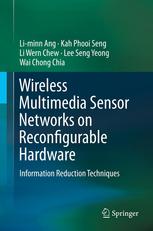

Most ebook files are in PDF format, so you can easily read them using various software such as Foxit Reader or directly on the Google Chrome browser.
Some ebook files are released by publishers in other formats such as .awz, .mobi, .epub, .fb2, etc. You may need to install specific software to read these formats on mobile/PC, such as Calibre.
Please read the tutorial at this link: https://ebookbell.com/faq
We offer FREE conversion to the popular formats you request; however, this may take some time. Therefore, right after payment, please email us, and we will try to provide the service as quickly as possible.
For some exceptional file formats or broken links (if any), please refrain from opening any disputes. Instead, email us first, and we will try to assist within a maximum of 6 hours.
EbookBell Team

5.0
30 reviewsTraditional wireless sensor networks (WSNs) capture scalar data such as temperature, vibration, pressure, or humidity. Motivated by the success of WSNs and also with the emergence of new technology in the form of low-cost image sensors, researchers have proposed combining image and audio sensors with WSNs to form wireless multimedia sensor networks (WMSNs). This introduces practical and research challenges, because multimedia sensors, particularly image sensors, generate huge amounts of data to be processed and distributed within the network, while sensor nodes have restricted battery power and hardware resources.
This book describes how reconfigurable hardware technologies such as field-programmable gate arrays (FPGAs) offer cost-effective, flexible platforms for implementing WMSNs, with a main focus on developing efficient algorithms and architectures for information reduction, including event detection, event compression, and multicamera processing for hardware implementations. The authors include a comprehensive review of wireless multimedia sensor networks, a complete specification of a very low-complexity, low-memory FPGA WMSN node processor, and several case studies that illustrate information reduction algorithms for visual event compression, detection, and fusion.
The book will be of interest to academic researchers, R&D engineers, and computer science and engineering graduate students engaged with signal and video processing, computer vision, embedded systems, and sensor networks.